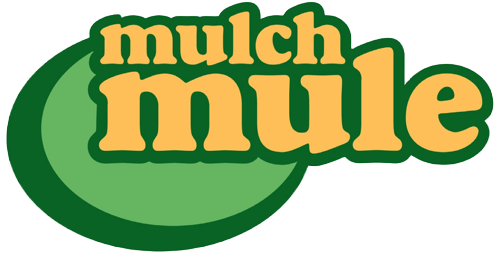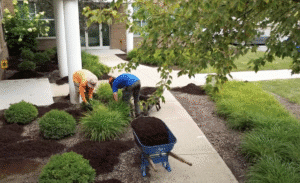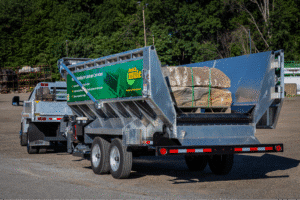The landscaping industry is poised for significant changes. Rising client expectations, labor costs, and technological innovations are redefining how businesses operate and compete. Investing in modern tools can help you streamline labor-intensive tasks, enhance efficiency, and boost profitability.
This article explores the top 13 profitable landscaping services for today’s landscaping businesses, offering practical insights into how you can elevate your operations and remain competitive in a rapidly evolving market.
Landscaping Industry Trends
The landscaping industry is currently being shaped by several significant trends, and staying competitive necessitates a clear understanding of these shifts.
Sustainability is a primary driver, with eco-friendly practices such as native planting and organic treatments gaining prominence. These methods not only offer long-term cost reductions but also strategically position businesses as responsible service providers, especially given increasing regulatory requirements and consumer demand for environmental stewardship.
Another key trend is the emergence of year-round demand for landscaping services; the need for landscaping extends beyond the traditional growing season. Offering services like debris removal and dormant pruning during autumn, winter, and early spring allows businesses to secure consistent revenue streams throughout the year.
Furthermore, automation and efficiency are becoming crucial as businesses seek to address worker shortages and high labor costs. The adoption of tools like the Mulch Mule Trailer exemplifies how automation can effectively replace or supplement manual tasks, leading to improvements in both safety and overall profitability.
Finally, the growing interest in enhanced outdoor living spaces is a significant trend, with features such as patios, fire pits, and custom hardscapes becoming increasingly popular. Modern design software is empowering providers to create stunning and functional additions to clients’ living spaces, meeting this evolving consumer desire.
13 Profitable Landscaping Services

Below are the top services you should consider offering or expanding to capture market share. These services represent key areas of growth, increased demand, and opportunities for higher profit margins within the landscaping industry. By diversifying your service offerings and leveraging modern techniques and equipment, you can attract a broader client base and ensure more consistent revenue streams throughout the year. Focusing on efficiency and customer value will be crucial for success in these areas.
1. Lawn Care and Maintenance
Lawn care remains a cornerstone of the industry. Tasks such as mowing, fertilizing, and aeration attract steady demand. Integrating automated equipment and digital scheduling saves time, reduces labor costs, and provides a consistent, high-quality finish. This focus on efficiency often leads to better client retention.
2. Tree Care and Trimming
Controlled tree trimming and removal are vital for safety, aesthetics, and property health. Modern lifts, safety gear, and skilled crews minimize risk. Offering additional services like stump grinding enhances customer value and positions your business as a comprehensive solution for all tree-related needs.
3. Mulching Services
Mulch creates visual harmony and helps conserve soil moisture. Advanced technology—such as the Mulch Mule—allows for swift material loading and uniform dispersal. By automating these processes, you can reduce manual labor and improve onsite safety.
4. Seasonal Yard Cleanups
Even the best-maintained landscapes require thorough cleanups. During autumn and winter, removing leaves, branches, and debris keeps lawns healthy and properties visually appealing. Bundling seasonal cleanups with routine maintenance creates predictable revenue.
5. Hardscaping Installations
Patios, retaining walls, and outdoor kitchens are increasingly popular and often command premium fees. Modern construction techniques supported by 3D design software ensure precise measurements and quicker build times. Adding distinctive stonework, pavers, or decorative elements can significantly boost property value and client satisfaction.
6. Sustainable Landscaping
Eco-conscious approaches—water-wise irrigation, organic treatments, and native plants—draw environmentally minded clients and lead to reduced long-term costs. Initiatives like the Sustainable Sites Initiative offer guidelines for building landscapes that resist pests, minimize chemical use, and promote biodiversity.
7. Vertical Gardening
Space constraints in urban areas drive demand for vertical gardens on walls and fences. These installations improve air quality and provide aesthetic appeal. Whether for commercial buildings or private homes, vertical gardening can be a profitable service, particularly when paired with efficient wall-mounted irrigation and soil systems; however, actual profit margins depend on market demand, operational costs, and implementation efficiency.
8. Stormwater Management Solutions
Frequent extreme weather issues make flood control a top priority. Services like bioswales, permeable pavements, and rain gardens effectively handle runoff. As highlighted in EPA Guidance on Stormwater Management, these methods not only prevent property damage but also improve local water quality.
9. Outdoor Lighting Installation
Well-placed lighting fixtures extend the usability of outdoor spaces into the evening, while also adding a layer of security. Low-voltage LED systems reduce energy consumption, and smart technology integration allows clients to control lighting from mobile apps. This service enhances curb appeal and boosts property values.
10. Landscape Design Consulting
Offering professional planning, site assessment, and detailed renderings positions your business as an authority. Tools like advanced design software and 3D visualization help clients see the final result, promoting confidence and justifying premium consulting fees.
11. Commercial Landscape Maintenance
Commercial properties—ranging from office complexes to retail centers—require meticulous landscape upkeep to preserve brand image. Services include regular mowing, trimming, seasonal planting, and debris management. By leveraging automated equipment and robust scheduling tools, businesses can manage larger commercial portfolios efficiently.
12. Snow Removal and De-Icing
Snow and ice management remains critical in regions with harsh winters. Specialized machinery and de-icing methods ensure safety for walkways and parking areas. Offering year-round services, including winter tasks, diversifies revenue streams and ensures steady business despite seasonal fluctuations.
13. Xeriscaping
In areas prone to drought or water scarcity, xeriscaping uses low-water plants, gravel, and strategic mulching to reduce irrigation needs. These water-saving designs appeal to eco-conscious customers and can drastically lower water bills.
Challenges and Mitigation Strategies in Modern Landscaping
The modern landscaping industry, while ripe with opportunity, also presents a unique set of challenges that can impact profitability and operational efficiency. Addressing these hurdles proactively is essential for sustainable growth and long-term success. The following section outlines common obstacles faced by landscaping businesses today and provides practical mitigation strategies to overcome them, ensuring your operations remain robust and competitive. By understanding and preparing for these potential pitfalls, you can build a more resilient and effective business model that thrives amidst evolving industry demands.
While these services tap into high-growth areas, challenges require strategic responses:
Managing Transition Costs
High-end equipment can be costly. Leasing, phased purchasing, and group buys can ease financial strain. Over time, reduced labor expenses and increased project capacity help offset these initial investments.
Addressing Skilled Labor Shortages
Automation reduces some labor needs, but experienced crews remain essential. Forge partnerships with trade schools, or create in-house mentorship programs. Cross-training employees on specialized tools fosters resilience and ensures uninterrupted service delivery.
Integrating New Technologies with Traditional Practices
Staff might resist new methods without proper guidance. Hands-on demos, peer-training sessions, and employee incentives accelerate adoption. Emphasize how innovations improve both service quality and on-the-job safety.
Ensuring Regulatory Compliance
Following guidelines such as the National Association of Landscape Professionals and local regulations is critical. Ongoing training, audits, and community outreach initiatives keep you informed of environmental standards and legal obligations.
The Role of Innovative Tools in Boosting Business Growth
Innovation profoundly shapes competitive advantages in landscaping, serving as a critical differentiator in a rapidly evolving market. Embracing cutting-edge tools and technologies is no longer just an option but a necessity for businesses aiming to optimize their operations, enhance service delivery, and secure a significant edge over competitors. By strategically integrating advanced equipment, landscaping companies can unlock new levels of efficiency, safety, and capacity, directly translating into accelerated business growth and increased profitability. This section explores how these innovative tools drive success across several key areas.
Enhancing Productivity
Automating labor-intensive tasks frees teams for creative and strategic work. For instance, specialized debris solutions such as the leaf vacuum features enhance productivity during fall cleanup. Faster job completion translates to satisfied clients and the potential to serve more customers per season.
Improving Safety and Reducing Costs
Robust tools minimize the risk of injuries that often accompany strenuous manual tasks. By using high-capacity trailers and vacuum systems, companies can also limit the potential for property damage. Don’t overlook the long-term cost savings from lower workers’ compensation claims and reduced downtime.
Enabling Extended Service Coverage
Modern machinery handles large quantities of mulch, leaves, and debris, ensuring quick job turnover. Through year-round capabilities, you can manage seasonal variations effectively. The combination of automated material handling with regular maintenance oversight addresses challenges spanning spring growth, fall cleanups, and even winter tasks.
Integrating Digital Transformation in Landscaping
Merging data-driven insights with traditional techniques provides a powerful edge.
Digital Scheduling and Project Management
Cloud-based platforms optimize resource allocation and let you track progress across multiple job sites. Automated reminders reduce missed services, improving client satisfaction. By organizing scheduling data, you can better capture recurring revenue opportunities.
Smart Technology and Sensor Integration
Sensors monitor moisture content and plant health to guide water usage and fertilizer application. This targeted approach cuts waste and strengthens plant resilience.
Enhancing Customer Engagement Through Technology
Mobile apps and online dashboards let clients oversee maintenance progress and installation updates in real time. Transparent communication fosters trust, often resulting in repeat or upgraded service requests. Incorporate before-and-after photos, care tips, and service reminders to keep customers engaged.
Future Trends and Innovations in Landscaping
The landscaping industry is on the cusp of a technological revolution, with exciting developments poised to reshape how businesses operate and deliver services. Embracing these emerging innovations will be crucial for companies looking to maintain a competitive edge and unlock new avenues for growth and client satisfaction.
- Artificial Intelligence (AI) applications are rapidly advancing, moving beyond simple automation to offer sophisticated analytical capabilities. In landscaping, AI can analyze vast amounts of historical data, including weather patterns, soil conditions, and plant growth cycles, to optimize landscape designs for resilience and aesthetics. More importantly, AI’s predictive power enables proactive maintenance, identifying potential plant health issues or irrigation inefficiencies before they escalate into costly problems. This foresight minimizes waste, extends the life of landscapes, and ultimately enhances customer satisfaction through consistently healthy and vibrant outdoor spaces.
- Augmented Reality (AR) is transforming the client consultation and design visualization process. Instead of relying solely on 2D drawings or abstract descriptions, AR allows clients to experience proposed landscape changes in real-time, overlaid onto their existing property through a tablet or smartphone. This immersive visualization minimizes misunderstandings and disputes, as clients can see exactly how new patios, planting schemes, or hardscapes will look before any physical work begins. This enhanced clarity and collaborative design process lead to greater client confidence and significantly smoother project execution.
- Robotics is set to revolutionize labor-intensive tasks within landscaping. Specialized robots for planting, precise mowing, and intricate pruning can operate with unparalleled accuracy and consistency, significantly reducing human error and ensuring uniform, high-quality results across large-scale projects. When integrated with data analytics, these robots can optimize routes, manage resources, and provide real-time feedback on progress. This not only addresses skilled labor shortages but also enhances efficiency, allowing businesses to undertake more ambitious projects with greater precision and speed.
Such tools, when efficiently integrated into your operations, can create new opportunities for differentiation, allowing your business to offer more advanced, precise, and visually compelling services that stand out in the market.
Practical Tips for Expanding Landscaping Services
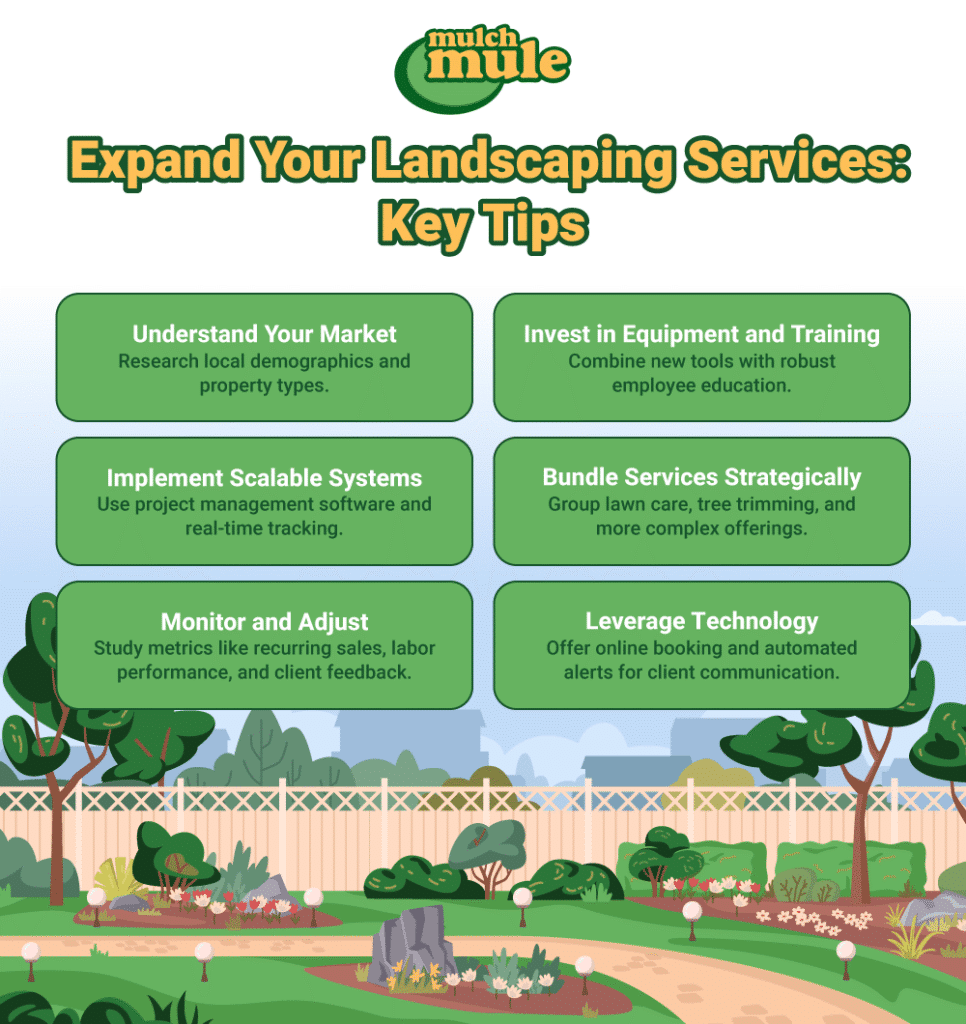

To seize the myriad opportunities within the evolving landscaping industry, a strategic and multifaceted approach is essential. Simply offering new services isn’t enough; successful expansion hinges on meticulous planning, smart investments, and a commitment to continuous improvement.
Understand Your Market
Thorough market research is the bedrock of successful expansion. This involves delving deep into local demographics, analyzing property types (residential vs. commercial, small plots vs. large estates), and identifying specific pain points or unmet needs within your target area. For instance, understanding a prevalence of large properties might highlight the need for efficient bulk material handling. By pinpointing these niches, you can tailor your service offerings to resonate directly with potential clients and establish a clear competitive advantage.
Invest in Equipment and Training
Expanding services often necessitates new tools, but equipment acquisition must be paired with robust employee education. Investing in high-capacity, efficient machinery like an advanced mulching system or specialized tree care equipment can dramatically improve productivity and service quality. Equally vital is comprehensive training for your team on how to operate this new equipment safely and effectively.
Implement Scalable Systems
As your service portfolio grows, so does the complexity of managing operations. Implementing scalable systems is crucial for maintaining efficiency and coordination. This includes adopting advanced project management software that can track multiple contracts simultaneously, schedule tasks, and allocate resources effectively. Real-time tracking tools can provide insights into crew locations and job progress, allowing for agile adjustments and optimal route planning. These systems reduce administrative burdens, minimize delays, and ensure consistent service delivery across an expanding client base.
Bundle Services Strategically
Offering services in isolation might attract some clients, but bundling them strategically can significantly increase average job value and client retention. Grouping core offerings like lawn care and tree trimming with more specialized or premium services, such as sustainable landscaping solutions, creates comprehensive packages that offer convenience and perceived value to clients. This approach can also streamline sales processes and foster stronger, long-term client relationships.
Monitor and Adjust
Continuous monitoring and a willingness to adjust are paramount in a dynamic industry. Regularly study key performance indicators (KPIs) such as recurring sales rates, labor performance per project, client acquisition costs, and, critically, client feedback. This data provides invaluable insights into what’s working and what isn’t. Be prepared to refine existing services, discontinue underperforming ones, and enthusiastically adopt additional technological advancements or innovative practices as they emerge. Staying agile ensures that you consistently capitalize on new market demands while maintaining operational stability and financial health.
Leverage Technology for Client Communication
In today’s digital age, seamless client communication is a powerful differentiator. Implement online booking platforms that allow clients to schedule services at their convenience, reducing inbound call volume and freeing up administrative staff. Automated alerts for appointment reminders, job completion notifications, and even proactive maintenance tips enhance customer satisfaction and build trust. These technological integrations streamline the client experience, foster transparency, and contribute to higher retention rates.
Gain the Efficiency to Expand Your Services Today
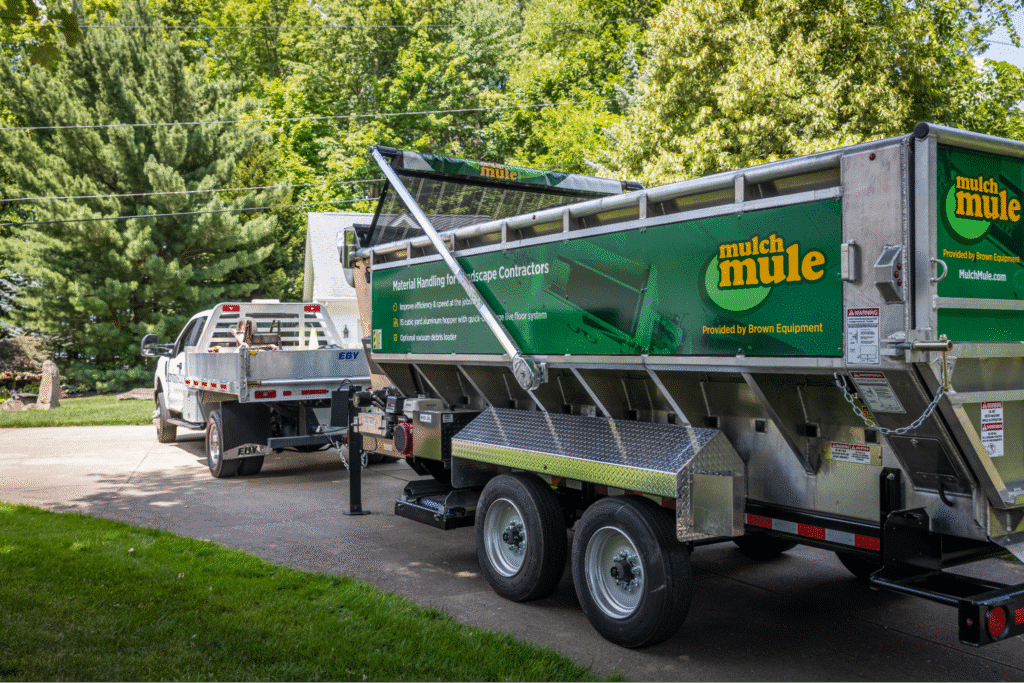
Facing increasing competition and evolving client needs, landscaping companies must embrace the right mix of traditional expertise and modern technology to thrive. Whether offering time-tested services like lawn maintenance or exploring profitable frontiers such as vertical gardening, businesses that innovate will stand out.
Tools like the Mulch Mule reduce labor costs, improve safety, and open avenues for higher project throughput. Combining equipment advancements with digital transformation and strategic partnerships results in a robust, future-proof business model.
Ready to unlock new possibilities? Learn more about enhancing your service portfolio and maximizing efficiency. Contact Mulch Mule today to get a quote or request a demo to experience firsthand how modern solutions can power long-term growth in your landscaping business.
